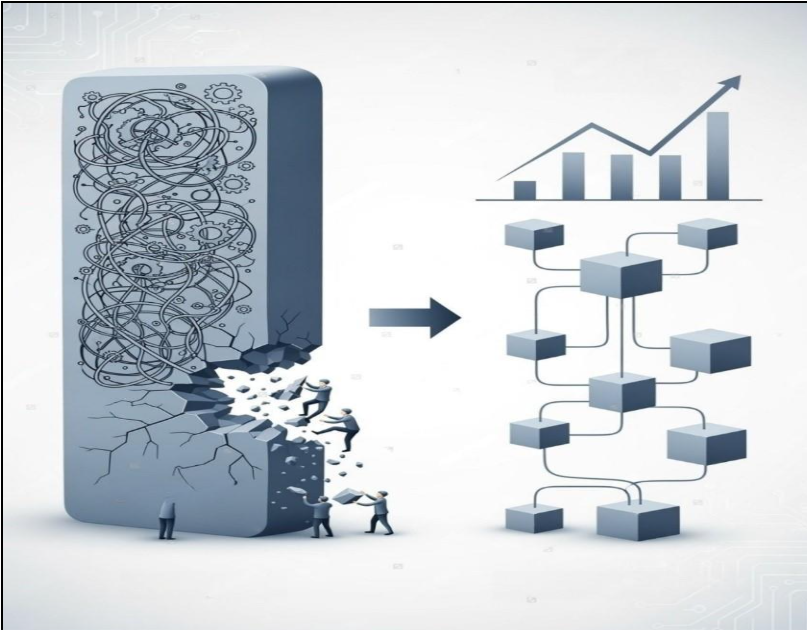In our previous discussion we explored how shifting from monolithic to microservices systems provides organizational agility. Today we explore the returns of modernization, focusing on how the transformation to modernization can significantly impact business’s ROI.
Though the move from legacy to modern architectures like microservices has become a must strategy for every business, what ultimately matters are the returns - the return on investment (ROI) of modernization!
Understanding the ROI of Modernization
At its core, ROI represents the value a business derives relative to investments made. When it comes to the modernization of legacy systems, the benefits are clear but can be difficult to quantify at first glance.
By shifting from monolithic systems to microservices, businesses can enjoy long-term returns in several key areas, like cost efficiency, time-to-market, operational agility, and customer satisfaction.
Key Drivers of ROI from Modernization via Microservices:
- Cost Reduction:
- Infrastructure Optimization: Involves accurate alignment of resources to match operational needs. Using tools for automation, containerization, orchestration and monitoring enables organizations to easily manage, optimize and scale infrastructure components.
- Operational Efficiency: Automating key processes like building, testing, deployment, configuration and monitoring results in significant cost benefits, reduced manual error, improved code quality, better resource utilization, increased agility and innovation.
- Faster Time to Market:
- Agile Development: Adopting agile methodologies enable cross-functional teams to work in parallel – each working on different service at the same time, enabling reduced time for development and deployment. All round efficiency and productivity are evident in the organization’s push for quicker adaptation to dynamic market needs.
- Automation with Generative AI: Employing Generative AI for code automation, API-development assists, database schema generation, devOps task automation, system log analysis and performance metrics result in accelerated development, reduced errors, quicker testing and faster implementation.
- Scalability and Flexibility:
- Selective Scaling: With microservices, you choose which components to scale – be selective in scaling only those components that are in demand. This enables businesses to be cost-efficient and flexible.
- Adaptability: As your business grows, microservice architecture allows for faster updates to service functions enabling easy and quick alignment with new business needs or external market changes. The ability to quickly pivot when required increases agility and, ultimately, the bottom line.
- Improved Customer Experience:
- Faster Response Times: With microservices, problem isolation is the key - issues in one area of the system does not impact the entire application. This isolation enhances system availability, reliability and ensures a smoother experience for customers.
- Personalization: Modernized systems can process huge data sets providing accurate and in-depth insights on various business aspects. These can further be processed by AI-powered algorithms enabling companies to offer personalized customer offerings. The outcome is enhanced customer satisfaction and improved customer retention rates.
- Reduced Risk:
- Minimal Downtime: Microservices-based systems allow failures to occur without disrupting the entire application enabling fault isolation, reduced downtime and increased reliability, making the system more resilient to external disruptions.
- Lower Maintenance Costs: Achieve cost optimization through selective updates and resource allocation. The modular nature of microservices allows businesses to update only the required components of a system without touching the entire platform. Resource optimization can be achieved by allocating resources to only those areas, within the system, that need it.
The Long-Term Value of Modernization
While the initial investment in modernizing legacy systems may seem daunting, the long-term value far outweighs the upfront costs. The ROI from modernization extends beyond direct cost and time savings - it enables you to futureproof your business.
Here’s how:
1. Strategic Agility and Innovation
Microservices-based architectures foster an environment of quick and continuous development. The flexibility offered by these systems enable safe experimentation with new technologies, features, and business models. This ongoing innovation helps businesses stay competitive and anticipate future customer trends and market demands.
- Swift Response to Market Changes: Modernized systems allow businesses to adjust their offerings quickly, enabling faster response to changes in customer demands, regulations, or competition.
- Fostering a Culture of Innovation: The shift to Generative AI-based microservices development removes the friction of monolithic systems, empowering development teams to experiment, innovate, and develop at a pace that drives business growth.
2. Data-Driven Decisions
Modernization using Generative-AI fed business logic opens the door to enhanced data analytics capabilities. By adopting these state-of-the-art technologies, businesses gain better access to vast amounts of quality data and insights. This data can then be leveraged to facilitate strategic decision making.
- Better Insights: AI-enabled microservices architectures improve data collection, making it easier to analyse performance, customer behaviour, and product usage in real-time.
- Personalized Strategies: AI-driven data insights enable businesses to dole out custom-tailored offerings and enhance marketing, sales, and customer service strategies. This enables higher conversion rates and customer retention.
The ROI Factor
The decision to modernize is not just about improving technology - it’s about deriving strong returns for critical investments made - enabling long-term, sustainable growth.
The key to unlocking the ROI of modernization lies in strategic planning and execution. By breaking down the migration into manageable phases, businesses can experience the benefits of modernization quickly, with minimal disruption.
Call to Action: Start Your Modernization Journey Today
The ROI of modernization is clear, and the benefits are waiting for you! Contact us now to discuss your modernization roadmap and achieve transformation that drives lasting business success.
Let’s make your systems future-proof starting today!



